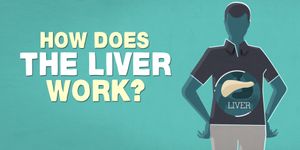Parkinson's Patients Sing for Their Recovery
Patients who have been diagnosed with Parkinson’s disease (PD) are often isolated socially because of the impairments the disease can cause. It limits mobility, speech and eventually memory and often the result is that patients are wind up away from the very activities that could slow the progress of the disease, namely socialization, exercise and conversation with others.
A group at Northern Arizona University has come together to combat some of that isolation and offer Parkinson’s patients a way to participate with others in an activity that can be therapeutic and fun…choir singing.
The Mountain Tremors is a group of patients in various stages of PD. They are from the Flagstaff area and along with some students and faculty from the Department of Communications Sciences and Disorders and the School of Music at NAU, they sing, loudly for all to hear, and the benefits have been significant for those with PD, and for those that sing alongside them. The mechanics of singing, including breathing from the diaphragm, learning the words and tunes, projecting clearly and paying attention to the director are all actions that can improve their musical skills as well as their medical condition.
Fe Murray, a professor of speech-language pathology at NAU, is in charge of the group and has been working with the patients and singers for about two years. She explained the benefits of music for the patients and others, stating, “The goals of the choir are to develop a community of people with neurological impairments, their families, caregivers and friends, around music. For those with Parkinson’s in particular, I have seen an improvement in social engagement, as well as a maintenance of vocal ability. We have a small core group of loyal members who may not have much in common outside of their diagnosis, yet music provides a common ground, something they can all relate to, a shared joyful experience.”
While it might seem that patients with PD could simply listen to music and sing along at home, it takes more than that. The community involvement aspect of the group is just as important as the music and songs. Parkinson’s begins in the basal ganglia of the brain where emotion, speech, movement and motivation are handled. Parkinson’s patients have lower levels of dopamine in this part of the brain and that deficit can impact their motivation to participate in therapy on their own. When there is a regular meeting time, and other patients and singers, it’s more effective since everyone who takes part looks forward to it and doesn’t think of it as a chore.
Research is going on in several places about the impact choral singing can have on patients with Parkinson’s, Alzheimer’s and even those with aphasia (loss of speech) after a stroke. (https://www.labroots.com/trending/neuroscience/1694/singing-for-recovery) Valerie Carter is a professor of therapy at NAU and explained some of the benefits specific to Parkinson’s Your muscles are working, your brain is working with learning new things and your voice is getting louder because you have to practice it. That’s why choir is so great. You need to sing loud. You need to sing on pitch, hopefully. You need to listen, you need to pause. Those are all things people with Parkinson’s struggle with, but if they practice they can actually outperform healthy control individuals.”
The program also benefits students at NAU, those who study physical therapy, communications, and music. Working with the Mountain Tremors affords them an opportunity to learn more about patients they may encounter in their careers. The video below takes a look at this singing group and how they’ve become part of the NAU and Flagstaff communities, listen in on how loud and proud they are.
Sources: Northern Arizona University, Parkinson’s Disease Foundation, ABC Radio Brisbane ()









